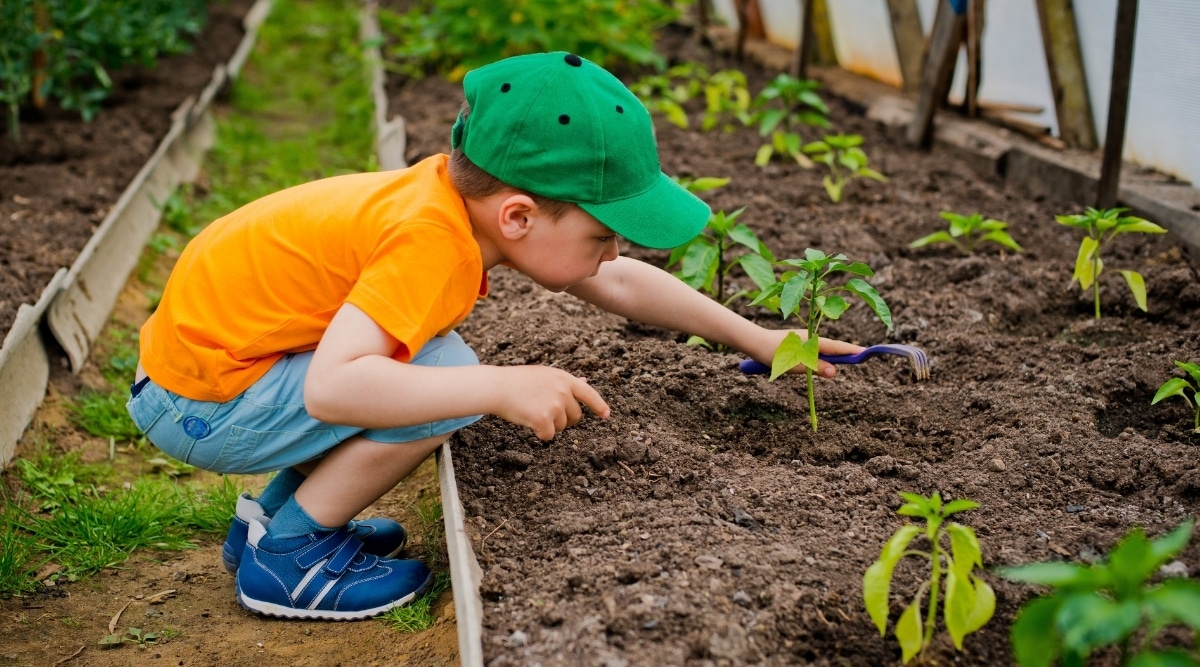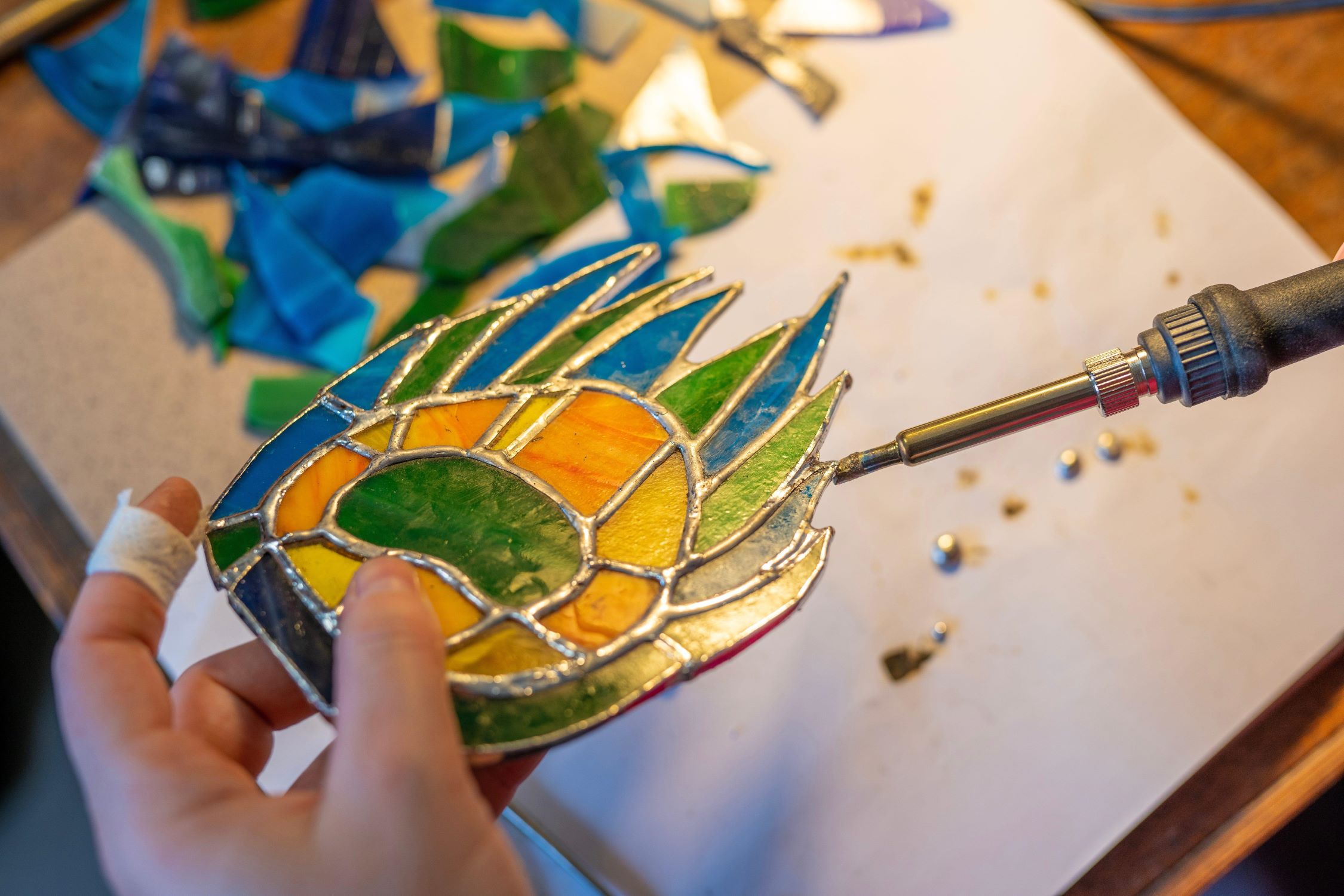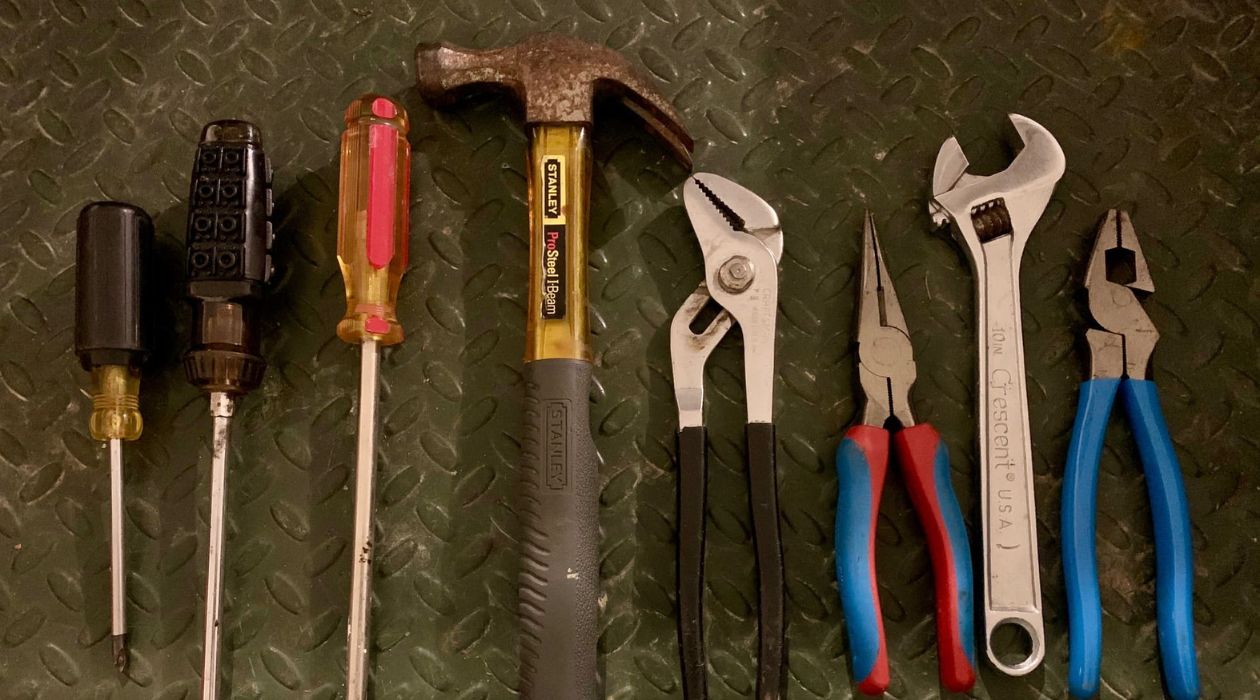

Articles
How To Learn To Garden
Modified: March 24, 2024
Learn the art of gardening with our comprehensive guide. Discover expert tips and techniques to cultivate a beautiful and thriving garden. Start your gardening journey today!
(Many of the links in this article redirect to a specific reviewed product. Your purchase of these products through affiliate links helps to generate commission for Storables.com, at no extra cost. Learn more)
Introduction
Welcome to the world of gardening! Whether you have a sprawling backyard or a small balcony, gardening is a wonderful hobby that allows you to connect with nature and create something beautiful. Not only does it bring joy and relaxation, but it also provides numerous benefits, such as improving mental health, increasing physical activity, and even growing your own fresh and healthy produce.
Learning how to garden may seem like a daunting task, but with the right knowledge and guidance, anyone can become a successful gardener. In this article, we will explore the fundamental steps and techniques to help you embark on your gardening journey.
Before we get started, it’s important to understand that there are various methods and approaches to gardening. You can choose to cultivate a traditional soil garden, try your hand at container gardening, or even experiment with hydroponics. Each method has its own advantages and considerations, so take some time to research and decide which approach suits your space, resources, and interests.
Now that you have a general understanding of the different gardening methods, let’s dive into the essential aspects of gardening that will set you on the path towards success. Remember, gardening is a continuous learning process, so embrace the journey and don’t be afraid to make mistakes along the way.
Key Takeaways:
- Embrace the journey of gardening, from choosing the right method to harvesting the fruits of your labor. Connect with nature, learn from mistakes, and enjoy the therapeutic benefits of nurturing life.
- Gardening is a continuous learning process. Experiment with different techniques, connect with fellow gardeners, and find joy in the beauty and abundance of your garden. Happy gardening!
Read more: How To Learn Construction
Choosing the Right Gardening Method
When it comes to gardening, selecting the right method is crucial for the success of your plants. Consider factors such as your available space, time commitment, and personal preferences. Let’s explore some popular gardening methods to help you make an informed decision:
- Traditional Soil Gardening: This method involves planting directly in the ground, typically in raised beds or garden plots. It requires adequate space, access to good soil, and proper drainage. Traditional soil gardening allows for a wide variety of plants and is ideal for those who enjoy the tactile experience of working with soil.
- Container Gardening: If you have limited space or live in an apartment, container gardening provides a great alternative. You can use pots, hanging baskets, or even repurpose old containers to grow your plants. This method offers the flexibility to move your garden around and experiment with different plant varieties.
- Vertical Gardening: Vertical gardening is an efficient way to maximize space by growing plants upwards on structures such as trellises, walls, or specialized vertical planters. It’s perfect for small gardens or areas with limited ground space. Vining plants like tomatoes and cucumbers thrive in vertical gardens.
- Hydroponics: Hydroponics is a soil-less gardening method that involves growing plants in a nutrient-rich water solution. This technique allows for precise control over the growing conditions and can produce faster growth and higher yields. Hydroponics is gaining popularity among urban gardeners and those who want to explore innovative gardening methods.
- Permaculture: Permaculture focuses on creating sustainable ecosystems that work harmoniously with nature. It incorporates elements such as companion planting, composting, and water conservation to minimize environmental impact. Permaculture gardens are designed to be self-sustaining and require less maintenance over time.
Consider your specific circumstances and goals when choosing a gardening method. It’s also helpful to research and seek advice from experienced gardeners or local gardening centers. Remember, there’s no one-size-fits-all approach, so choose the method that aligns with your preferences and resources.
Selecting Suitable Plants
Choosing the right plants for your garden is essential for their growth and overall success. Factors such as climate, sunlight availability, soil type, and personal preference should be considered when selecting plants. Here are some tips to help you choose suitable plants:
- Know Your Hardiness Zone: Determine your hardiness zone, which is based on your location and indicates the average minimum temperature in your area. This information will guide you in selecting plants that can tolerate the local climate.
- Consider Sunlight Requirements: Assess the amount of sunlight your garden receives throughout the day. Some plants thrive in full sun, while others prefer partial or shade. Choose plants that match the sunlight conditions of your garden.
- Take Soil Composition into Account: Different plants have specific soil requirements. Test your soil to determine its pH level and nutrient content. Acidic plants like blueberries thrive in acidic soil, while vegetables often prefer neutral to slightly acidic soil. Amend the soil as needed to create optimal growing conditions.
- Consider Space and Size: Take into account the mature size of plants and ensure they have enough space to grow. Avoid overcrowding, as it can lead to competition for nutrients and hinder the growth of your plants.
- Consider Maintenance Needs: Some plants require more care and attention than others. If you have limited time or are a beginner gardener, opt for low-maintenance plants that are more forgiving and resilient.
- Research Pests and Diseases: Certain plants are more susceptible to pests and diseases. Research common issues in your area and choose plants that are known to be resistant or less prone to these problems. This will help minimize the need for chemical interventions.
- Consider Your Preferences: Don’t forget to consider your personal preferences and the purpose of your garden. Do you want a flower garden, a vegetable patch, or a mix of both? Choose plants that align with your aesthetic preferences and gardening goals.
When selecting plants, it’s always a good idea to seek advice from experienced gardeners or local nurseries. They can provide valuable insights and recommendations based on your specific situation. Remember, gardening is a journey of exploration and experimentation, so don’t be afraid to try new plants and learn from the process.
Preparing the Soil
Preparing the soil is a crucial step in creating a healthy and fertile environment for your plants to thrive. Good soil provides essential nutrients, proper drainage, and a favorable pH level. Here are some steps to prepare your soil for gardening:
- Clear the Area: Start by clearing out any weeds, rocks, or debris from the area where you plan to garden. This will prevent unwanted competition for nutrients and create a clean space for your plants.
- Test the Soil: Testing your soil’s pH level and nutrient content is important to understand its composition. Home testing kits are available, or you can send a soil sample to a local agricultural extension office for more accurate results. This information will guide you in determining any necessary amendments.
- Amend the Soil: Based on the soil test results, you may need to amend your soil to improve its texture and nutrient content. Adding organic matter such as compost, well-rotted manure, or peat moss can enhance soil structure, increase fertility, and promote better drainage.
- Loosen the Soil: Use a garden fork or tiller to loosen compacted soil. This will improve root penetration, aeration, and water circulation. Avoid over-tilling, as it can damage the soil structure and disrupt beneficial microorganisms.
- Level and Smooth the Surface: Rake the soil to create a level and smooth surface for planting. This will allow for even water distribution and facilitate proper seed germination.
- Apply Mulch: Adding a layer of organic mulch, such as straw, wood chips, or grass clippings, can help retain soil moisture, suppress weed growth, and regulate soil temperature. Apply a 2-3 inch layer around your plants, keeping it a few inches away from the stems.
- Consider Raised Beds: If your soil is of poor quality or you have limited space, consider creating raised beds. These enclosed structures allow you to control the soil composition and drainage more effectively. Fill the beds with a mix of quality soil, compost, and organic matter.
As you prepare your soil, remember that it’s an ongoing process. Regularly add organic matter, rotate crops, and monitor soil moisture to maintain a healthy growing environment. Taking the time to prepare your soil properly will lay the foundation for a thriving garden.
Planting and Transplanting
Planting and transplanting are critical stages in the gardening process that require attention to detail and proper techniques to ensure the successful establishment of your plants. Here are some guidelines to follow for planting and transplanting:
- Read Planting Instructions: Before you plant, read the specific instructions provided on the plant tags or seed packets. Pay attention to recommended spacing, planting depth, and any other special requirements.
- Prepare Planting Holes: Dig a hole that is slightly wider and deeper than the plant’s root ball or the size of the container. This will provide ample space for the roots to spread out and establish themselves.
- Handle Plants Carefully: When handling plants, try to minimize root disturbance. Gently loosen the roots if they are compacted or if you are transplanting them from a container. Be cautious not to damage or break the delicate stems or branches.
- Plant at the Right Depth: Make sure to plant at the appropriate depth. For seedlings, plant them at the same depth they were growing in the nursery containers. For seeds, follow the instructions on the packet for the correct planting depth.
- Water Thoroughly: After planting or transplanting, water the soil thoroughly to settle it around the roots and remove any air pockets. This will provide essential moisture and encourage root growth. Regularly water your plants during the initial establishment phase.
- Protect Seedlings: When planting seedlings, protect them from extreme weather conditions such as harsh winds, intense sunlight, or frost. Use protective covers or provide shade until they are established.
- Transplant with Care: If you are transplanting seedlings or mature plants, handle them gently to avoid damaging the roots. Dig a hole in the new location and carefully transfer the plant, keeping the root ball intact. Water immediately after transplanting to reduce stress on the plant.
- Space Plants Properly: Ensure adequate spacing between plants to allow for proper air circulation and to prevent overcrowding. This will minimize the risk of diseases and pest infestations.
Remember to consider the specific requirements of each plant when planting and transplanting. Some plants may need stake support or a trellis for climbing. Follow the recommended spacing and planting schedule for each variety to ensure optimum growth.
By following these planting and transplanting guidelines, you can help your plants establish strong roots and set them up for healthy growth in your garden.
Read more: How To Learn Plumbing
Watering and Irrigation
Proper watering and irrigation are essential for the health and vitality of your plants. Water is vital for plant growth, nutrient absorption, and overall functioning. Here are some tips to help you water your garden effectively:
- Understand Watering Needs: Different plants have specific watering preferences. Research the moisture requirements of the plants in your garden to ensure you provide them with the right amount of water.
- Water Deeply and Infrequently: Rather than shallow and frequent watering, it’s better to water deeply and less often. This encourages plants to develop deeper roots, making them more resilient to drought conditions.
- Water at the Right Time: Water your plants early in the morning or late in the evening when the temperatures are cooler. This reduces evaporation and allows the plants to absorb water more efficiently.
- Use Proper Watering Techniques: Direct the water towards the base of the plants, avoiding wetting the foliage as much as possible. This helps prevent diseases and fungal growth. Consider using a drip irrigation system or a soaker hose to provide water directly to the root zone.
- Monitor Soil Moisture: Regularly check the moisture level of the soil by inserting your finger into the top few inches. If it feels dry, it’s time to water. However, if it feels moist, wait for a day or two before watering again.
- Avoid Overwatering: Overwatering can lead to root rot, nutrient leaching, and other problems. Ensure that the soil has proper drainage to prevent waterlogged conditions. Adjust watering frequency based on weather conditions and plant needs.
- Consider Mulching: Applying a layer of organic mulch around your plants helps retain moisture, reduce evaporation, and regulate soil temperature. Mulch also helps suppress weed growth, keeping your garden healthier and more water-efficient.
- Collect and Reuse Rainwater: Consider setting up a rain barrel or collecting rainwater to use for watering your plants. This sustainable practice not only conserves water but also provides your plants with natural, chemical-free hydration.
- Water Newly Planted or Transplanted Plants: Newly planted or transplanted plants require extra care and attention. Keep the soil consistently moist during their initial establishment phase, ensuring the roots have sufficient moisture to grow.
- Observe Your Plants: Monitor the health and appearance of your plants. Wilting, yellowing leaves, or stunted growth may indicate that you need to adjust your watering routine.
Remember that different plants may have different watering needs, so it’s important to observe and understand their requirements. By following these watering tips, you can ensure that your plants receive adequate moisture for healthy growth and development.
Start small with easy-to-grow plants like herbs or cherry tomatoes. Learn about your local climate and soil to choose the right plants. Practice patience and observe your garden regularly.
Providing Adequate Sunlight
Sunlight is a vital factor for the growth and development of plants. Proper exposure to sunlight ensures that plants receive the energy they need for photosynthesis, which is essential for producing food and promoting overall health. Here are some tips to provide adequate sunlight for your plants:
- Assess Sunlight Availability: Determine the amount of sunlight your garden receives by observing the area throughout the day. Full sun means at least 6 to 8 hours of direct sunlight, while partial sun or shade refers to areas with dappled sunlight or a few hours of direct sun.
- Match Plants to Sunlight Conditions: Understand the sunlight requirements of the plants you wish to grow. Some plants, such as tomatoes and peppers, thrive in full sun, while others, like leafy greens, tolerate partial shade. Select plants that are well-suited to the sunlight conditions of your garden.
- Optimize Sun Exposure: Position your garden beds or containers in locations that maximize sunlight exposure. Place them in areas that receive the most direct sunlight throughout the day. If you have limited sun exposure, consider using reflective materials or mirrors to redirect sunlight to the plants.
- Provide Shade for Delicate Plants: Some plants, especially those with tender foliage or sensitive to intense sunlight, may benefit from partial shade. Use shade cloths, umbrellas, or create temporary structures to provide shade during the hottest parts of the day.
- Monitor Sunlight Changes: Observe any changes in sunlight patterns throughout the year. As the seasons change, the angle and intensity of the sun may vary. Adjust the positioning of your plants or use shade structures to accommodate these changes and ensure consistent sunlight exposure.
- Consider Vertical Gardening: If you have limited garden space, consider utilizing vertical gardening techniques. This allows you to take advantage of vertical surfaces, such as walls or trellises, to grow plants upwards and maximize sun exposure for all plants.
- Prune Overgrown Trees or Shrubs: If nearby trees or shrubs cast excessive shade on your garden, consider pruning them to allow more sunlight to reach your plants. Trimming back overgrown branches will also improve air circulation and prevent moisture-related issues.
- Use Reflective Surfaces: Make use of reflective surfaces, such as white or light-colored fences or planters, to bounce sunlight back onto your plants. This can help increase overall light levels in your garden.
- Rotate Plants: If certain areas of your garden receive more sunlight than others, rotate your plants periodically. This ensures that all plants receive their fair share of sunlight and reduces the risk of uneven growth.
- Provide Artificial Light: In cases where natural sunlight is limited, such as during winter months or in indoor gardens, supplement with artificial lighting systems specifically designed for plant growth. LED grow lights or fluorescent bulbs can provide the necessary light spectrum for plants to thrive.
Remember that sunlight requirements may vary for different plant species, so it’s important to research the specific needs of your chosen plants. By providing adequate sunlight to your plants, you will promote healthy growth, vibrant foliage, and bountiful harvests in your garden.
Fertilizing the Plants
Fertilizing your plants is essential for providing them with the nutrients they need to grow, flower, and produce healthy fruits or vegetables. Proper fertilization ensures that your plants have access to the essential elements that may be lacking in the soil. Here are some tips for effectively fertilizing your plants:
- Understand Nutrient Requirements: Different plants have varying nutrient needs. Familiarize yourself with the specific nutritional requirements of the plants in your garden. Nitrogen (N), phosphorus (P), and potassium (K) are the primary macronutrients, but other micronutrients are equally important.
- Test the Soil: Conduct a soil test to determine its nutrient composition. This will help you understand if any specific nutrients are deficient and require supplementation. Soil testing kits or professional soil analysis services are available to provide accurate results.
- Choose the Right Fertilizer: Select a fertilizer that matches the nutritional needs of your plants and addresses any deficiencies found in the soil test. There are organic and synthetic fertilizers available, each with their benefits and considerations. Organic fertilizers improve soil health and promote long-term sustainability.
- Follow Fertilizer Instructions: Carefully read and follow the instructions on the fertilizer packaging. This includes the recommended application rate, frequency, and method of application. Over-fertilizing can lead to nutrient imbalances or damage to the plants.
- Apply Fertilizer at the Right Time: Timing is crucial when applying fertilizer. Most plants benefit from a slow-release fertilizer applied at the beginning of the growing season. Regularly monitor your plants, and if signs of nutrient deficiency appear, consider additional fertilizer applications as needed.
- Avoid Fertilizing Stressed Plants: Refrain from fertilizing plants that are stressed due to extreme temperatures, disease, or drought. Focus on addressing the underlying issues causing the stress before applying fertilizer.
- Apply Fertilizer Evenly: Distribute the fertilizer evenly around the base of the plants, following the recommended application rates. Avoid direct contact of the fertilizer with the stems or leaves, as this may cause burning or damage.
- Consider Organic Amendments: Incorporate organic matter, such as compost or well-rotted manure, into the soil. These natural amendments improve soil fertility, structure, and nutrient availability over time.
- Mulch for Slow Release: Apply a layer of organic mulch around your plants to help retain soil moisture and release nutrients gradually. As the mulch breaks down, it enriches the soil with valuable organic matter.
- Monitor Plant Response: Observe how your plants respond to the fertilizer application. Monitor for healthy growth, increased flowering, or improved fruit production. Adjust your fertilization practices based on the plant’s needs and response.
Remember, proper fertilization is a delicate balance. It’s important to provide adequate nutrients without overdoing it. Regular soil testing, proper application, and monitoring plants’ response will help ensure they receive the right nutrients for optimal growth and vitality.
Controlling Weeds and Pests
Weeds and pests can wreak havoc on your garden, competing with your plants for nutrients and causing damage. Taking proactive measures to control weeds and pests is essential for maintaining the health and productivity of your garden. Here are some tips to effectively manage weeds and pests:
- Maintain Good Garden Practices: To prevent weed growth and pest infestations, practice good garden hygiene. Remove plant debris, fallen leaves, and weeds regularly to reduce habitat and breeding grounds for pests.
- Implement Mulching: Apply a layer of organic mulch around your plants to suppress weed growth. Mulch acts as a barrier, preventing weed seeds from germinating and competing with your plants for resources.
- Weed Regularly: Regularly inspect your garden and manually remove weeds as soon as they appear. Be diligent in removing weed roots to prevent regrowth. This prevents weeds from establishing and competing with your plants for nutrients and water.
- Use Organic Weed Control Methods: Consider using organic weed control methods, such as hand weeding, hoeing, or using natural weed suppressants like corn gluten meal or vinegar-based herbicides. These methods are environmentally friendly and safer for the overall health of your garden.
- Practice Crop Rotation: Rotate your crops each season to disrupt pests’ life cycles. This interrupts their feeding and breeding patterns, reducing the chance of widespread infestations. Additionally, rotating crops helps replenish the soil and reduce the buildup of pest-specific pathogens.
- Encourage Beneficial Insects: Attract beneficial insects, such as ladybugs, lacewings, and parasitic wasps, to your garden by planting flowers that provide nectar and pollen. These insects help control pests by acting as natural predators.
- Use Organic Pest Control Methods: Incorporate organic pest control methods, such as companion planting (planting beneficial plants alongside susceptible ones), introducing beneficial nematodes or predatory insects, or using homemade organic pest sprays made from ingredients like neem oil or garlic.
- Monitor Pest Populations: Regularly inspect your plants for signs of pest damage, such as chewed leaves, discolored foliage, or pest eggs. Catching pest problems early allows for timely intervention and prevents further damage.
- Practice Integrated Pest Management (IPM): IPM combines various pest control techniques, including biological control, cultural practices, and chemical interventions as a last resort. It focuses on using the least harmful methods and minimizing the negative impact on beneficial organisms and the environment.
- Stay Vigilant: Continuously monitor your garden, staying alert to any changes or signs of weed growth or pest activity. Prompt action is key to preventing weed or pest outbreaks.
Remember, it’s important to strike a balance when controlling weeds and pests. Avoid using excessive chemical interventions, as this can harm beneficial insects and disrupt the ecological balance of your garden. Take a proactive and holistic approach to create a healthy and sustainable garden environment for your plants to thrive.
Read more: How To Learn CAD
Pruning and Trimming
Pruning and trimming are essential gardening practices that promote plant health, shape growth, and enhance the overall appearance of your garden. By selectively removing certain branches, stems, or foliage, you can stimulate new growth, improve air circulation, and control the size and shape of your plants. Here are some tips for effective pruning and trimming:
- Know When to Prune: Timing is crucial when it comes to pruning. Different plants have different pruning requirements, so research the specific pruning recommendations for each plant species in your garden. Generally, prune deciduous plants during their dormant period in late winter or early spring, while it’s best to prune flowering shrubs after they have finished blooming.
- Use the Right Tools: Invest in high-quality pruning tools appropriate for the size and type of branches you’ll be cutting. Sharp bypass pruners are ideal for delicate pruning, while loppers or pruning saws are better suited for thicker branches or woody plants.
- Start with Dead or Diseased Branches: Begin by removing any dead, diseased, or damaged branches. These can attract pests or diseases and rob the plant of energy that could be directed towards healthy growth.
- Thin Out Overcrowded Growth: If your plants are becoming overcrowded or dense, selectively remove some of the interior branches to increase air circulation and sunlight penetration. This helps prevent the risk of diseases and improves overall plant health.
- Shape and Train Plants: Pruning is an effective way to shape and train plants to grow in the desired form. Trim back excessive growth or wayward branches to maintain the shape and structure of the plant. Use support structures, such as trellises or stakes, to guide climbing or vining plants.
- Pinch and Deadhead: Pinching off the tips of young plants or the spent flowers of flowering plants encourages bushier growth and promotes continuous blooming. Deadheading also prevents self-seeding and redirects the plant’s energy towards other growth areas.
- Consider the Plant’s Growth Habit: Different plants have different growth habits. Some produce flowers on new growth, while others bloom on older wood. Understanding the growth habit of each plant will help you determine the appropriate pruning method and timing.
- Take Safety Precautions: When pruning, wear protective gardening gloves and eyewear. Be cautious of thorns, sharp tools, or any potential hazards that may cause injury. Ensure stability and balance while using ladders or climbing for taller plants.
- Step Back and Observe: Throughout the pruning process, step back and observe the plant from different angles. This will help you make well-informed decisions on what to prune and how it will impact the overall appearance and growth of the plant.
- Prune as Needed: Regularly monitor your plants and prune as needed to maintain their health and shape. Small, regular pruning sessions are often more effective and less disruptive to the plant than infrequent, heavy pruning.
Remember, proper pruning techniques can vary depending on the specific plant species. Take the time to research and understand the specific pruning requirements of your plants. With careful pruning and trimming practices, you can promote healthier growth, encourage flowering, and enhance the beauty of your garden.
Harvesting the Fruits of Your Labor
After weeks or months of nurturing and tending to your garden, the time finally comes to harvest the fruits of your labor. Harvesting involves gathering the mature crops from your plants and enjoying the bountiful rewards. Here are some tips for successful and satisfying harvests:
- Timing is Key: Timing is crucial when it comes to harvesting. Each fruit or vegetable has its own specific harvesting window. Research the optimal harvest time for each crop in your garden to ensure that you pick them at their peak of flavor and ripeness.
- Observe Visual Cues: Visual cues are valuable indicators of ripeness. Pay attention to color changes, firmness, and size development. For example, tomatoes turn vibrant red (or their appropriate color) and soften slightly when they are ripe for picking.
- Harvest in the Morning: Harvesting in the morning, when temperatures are cooler, helps retain the best flavor and quality. Plants are less stressed, and the produce tends to be crisp and hydrated. Plus, working in the morning allows you to avoid the midday heat.
- Use the Right Tools: For delicate produce, like tomatoes or berries, use your hands to gently twist and detach them from the plant. For larger or tougher crops, such as melons or pumpkins, use pruners or a sharp knife to cut them from the stem. Ensure that your tools are clean and sharp to prevent damage to the plants or the produce.
- Handle with Care: Treat your harvest with care to prevent bruising or damage. Hold the produce gently, avoiding excessive squeezing or dropping. Place them in harvest baskets or containers lined with soft padded material to cushion them during transportation.
- Harvest Frequently: Regularly check your garden for mature crops and harvest them promptly. This encourages continued production and prevents overripening or spoilage. Harvesting frequently also helps maintain a tidy and productive garden.
- Practice Selective Harvesting: Some crops, such as lettuce or herbs, can be selectively harvested. Pick the outer, mature leaves or snip off only what is needed, allowing the plant to continue growing and yielding more harvest later.
- Store Properly: Proper storage is important to maintain the quality and freshness of your harvest. Some crops, like root vegetables, can be stored in a cool, dark, and dry place. Others, like fruits, may need refrigeration to prolong their shelf life. Refer to specific storage guidelines for each crop.
- Share and Enjoy: Don’t forget to share the fruits of your labor with friends, family, and neighbors. Nothing beats the joy of sharing homegrown produce and witnessing the delight it brings to others. Enjoy the satisfaction of all your hard work and relish the delicious flavors of your harvest.
- Reflect and Learn: Take a moment to reflect on your gardening journey and the lessons learned along the way. Consider what worked well and what can be improved upon for future seasons. Embrace the continuous learning and growing process of gardening.
Harvesting is a gratifying culmination of your gardening efforts. It’s a time to celebrate the success of your plants and the nourishment they provide. By following these tips, you’ll have a fruitful and rewarding harvest season in your garden.
Conclusion
Congratulations on embarking on your gardening journey! By now, you have learned the essential steps and techniques to become a successful gardener. Gardening is a fulfilling and rewarding hobby that allows you to connect with nature, nurture life, and enjoy the fruits of your labor.
Throughout this article, we have covered various aspects of gardening, from choosing the right gardening method and selecting suitable plants to preparing the soil, watering and irrigation, providing adequate sunlight, fertilizing the plants, controlling weeds and pests, pruning and trimming, and finally, harvesting the fruits of your labor.
Remember, gardening is a continuous learning process. Embrace the journey and don’t be afraid to make mistakes. Learn from your experiences, experiment with different techniques, and adapt as necessary. Each gardening season brings new challenges and discoveries, and with each success and setback, you will grow as a gardener.
Take the time to observe, nurture, and appreciate the beauty and resilience of the plants in your garden. Connect with other gardeners, whether in person or online, to share knowledge, seek advice, and find inspiration. Gardening is a community that welcomes all, and you’ll find joy in connecting with fellow enthusiasts.
As you tend to your garden, enjoy the calming and therapeutic benefits that gardening offers. It’s a chance to escape the stresses of daily life, immerse yourself in nature, and find solace in the simple act of nurturing life.
Whether your garden encompasses a small balcony, a backyard oasis, or a community plot, each space has the potential to become a sanctuary of beauty and abundance. Embrace the opportunities to grow your own fruits, vegetables, herbs, and flowers, and appreciate the flavors and scents that come from your garden.
Remember, gardening is not just about the end result, but the journey itself. It’s about connecting with the earth, fostering life, and finding happiness in the process. So, get your hands dirty, let your creativity bloom, and enjoy the wonders of gardening.
Happy gardening!
Frequently Asked Questions about How To Learn To Garden
Was this page helpful?
At Storables.com, we guarantee accurate and reliable information. Our content, validated by Expert Board Contributors, is crafted following stringent Editorial Policies. We're committed to providing you with well-researched, expert-backed insights for all your informational needs.














0 thoughts on “How To Learn To Garden”